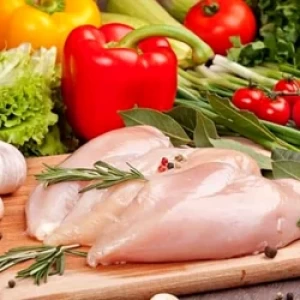ARGENTINE CHICKEN TO THE WORLD?

The Argentine poultry meat industry is enjoying a good season of growth with slaughter at nationally approved slaughterhouses growing around 24%, imports from other countries going down by roughly 30% (volume index, source SAGPyA, Boletin Avicola, Aug 2004), while exports have grown by roughly 50%.On the internal market chicken meat consumption appears to be growing, with apparent consume going up around 28%, that is to say that the average Argentine is now eating around 25kg of poultry meat/year, and at the same time consumer prices have gone down by approximately 7%, while beef prices have increased slightly.On the export market, Chile (35%) is the biggest importer, followed by China (22%), Germany (8%) and others (35%).Egg production has grown by 98%, while egg exportation has soared by an amazing 295%, with European markets such as Austria, Denmark, Belgium and Germany being the most important, taking more than 90% of the exported volume.These are impressive figures and well worth a warm round of applause. However, the challenge is to maintain this impressive record, and even to grow it.THE CONTEXTWhereas capturing and maintaining markets depends on many factors, poultry health and welfare is central to any strategy.2004 has been a special year for the international poultry industry, with recurring outbreaks of avian influenza literally wiping the Asian market off the map and the concomitant consumer reaction – is poultry meat safe to eat? – forcing the industry to take issue with lax rules, trade rules that did not foresee the great tragedy avian influenza has proven to be for millions of people.For the Argentine poultry producer, it should be recommended to view the latest successes in poultry meat and egg exports in the following context:The EU has extended the ban on Asian poultry products until March 31 2005, giving an unprecedented window of opportunity for other poultry producing countries.However, competition is fierce and even if the Asian market is KO for the moment, that situation is not likely to persist for many years, and even with the Asian giant out of the fray, you still have other countries such as Brazil, Chile, Russia, etc, who have not only the capacity to produce but who have been investing heavily in good health and welfare programs.REGIONAL MARKETFocusing on the regional market, a benchmarking of Brazil reveals that EMBRAPA has worked methodically for several years now to improve avian health, genetic stock, etc and the industry has on its own initiative arranged animal welfare courses and have now a small stock of animal welfare officers to overlook production, while Chile has developed and implemented the PABCO – Planteles Avicolas de Postura Bajo Control Oficial - with the industry looking to represent 25% of total food exports by 2010.Meanwhile, the USDA in its latest report for Argentina underlined that even though product quality is very good, future performance depends on many factors, chiefly among them improving efficiency, expanding production capacity and maintaining the exchange rate.However, something is missing from all of this, and that is the increased consumer awareness and appreciation of certifiable animal welfare standards and rejection of factory farming, making low price not the most convincing of sales arguments.An example is provided by post-AI Thailand, where faced with increased competition from low cost countries such as Brazil and China and newcomers on the market such as Vietnam and Myanmar, the industry itself, in cooperation with the Thai authorities developed and implemented strict HACCP and GMP standards, recognizing that animal welfare would be one of several standards that would give Thai exporters an improved competitive advantage and help capture premium broiler production and value added further processed products markets.NEW CHALLENGESIt is clear then, that Argentine poultry producers must face the challenge brought on by Chile and Brazil, where the authorities have a clear plan for poultry production and is prepared to support this industry also in other ways, while at the same time appreciating that consumer preferences are a little bit more sophisticated than merely low prices and high production capacity, and take full advantage of this window of opportunity by safeguarding and improving the already good poultry health conditions, and at the same time expanding the quality concept to include relevant animal welfare standards that would allow a more cost efficient use of the natural resource, the bird.This, along with other measures taken by the industry – such as for instance a high degree of discipline in order to meet the export goal for 2010, would constitute a credible, industry managed marketing strategy, and should help make up for the lack of a clear policy and plan by the Argentine authorities.Even on the internal market, where rules are not always consistent and clear, a similar strategy could help keep poultry products in demand. Although there has been no clear marketing drive to inform the Argentine consumer about the benefits of poultry meat, the ever health and beauty conscious Argentine gourmand is quick to pick up on new trends.HogEven if poultry prices are expected to increase slightly in 2005, but remain lower than beef, there still is the competition from the pork sector, where slaughter has increased by 17,6% since last year and consumption is up by 8,1%. With the sector gearing up to get access to the export markets an impressive effort has been done to control and eradicate Classical swine Fever (Peste Porcina) with vaccination against this disease banned since May 28 2004, and the international recognition that Argentina is free of this disease is just around the corner.Meanwhile, the pork industry has invested heavily in a high quality product and is looking to take a big chunk of the internal market. Pork meat is already cheaper than beef and even if margins are small now, pork meat is expected to become more competitive vs. beef. So the big question therefore is, what will Argentines eat if they have a choice of three different products – pork, poultry or beef? With beef having such a special history in Argentina, it is not likely that Argentines would switch eating habits from one day to another, but eventually they would.Meanwhile, Argentine poultry producers have to face up to the challenge by a hungry pork industry, and that is where product quality and safety, including good animal welfare practices, would be a very weighty argument indeed.* Hanne Martine Stabursvik, Norwegian veterinary surgeon working and living in Argentina. Member of the Royal College of Veterinary Surgeons, UK. One of her specialties is the veterinary checks on imported products of animal origin in the EU. She teaches animal welfare at the Universidad del Salvador, facultad de medicina veterinaria and works with specialists in the field from all over the world. She is also a member of the Red Alimentaria.




